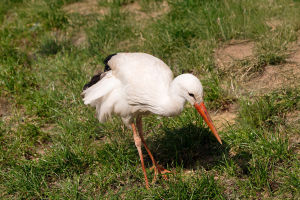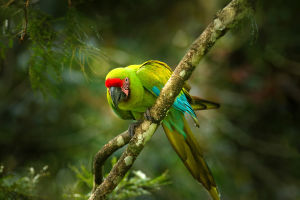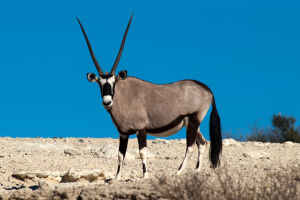Panda are one of the most beloved creatures on Earth, known for their distinct black-and-white fur and gentle demeanor.
However, there’s more to these iconic animals than just their appearance.
To truly understand why panda are so special, it’s essential to look deeper into their genetics and evolution!
1. Genetic Uniqueness: A Puzzle of DNA
Panda, particularly the giant panda, have a unique genetic makeup that sets them apart from other bears. Despite belonging to the Ursidae family, their DNA shows distinctive differences, making them a fascinating subject for genetic research.
Recent studies have revealed that giant pandas share about 98% of their DNA with brown bears, but the remaining 2% accounts for some surprising traits. This genetic distinction is evident in their digestive system, which is adapted specifically for a bamboo-heavy diet, unlike other bears that are omnivores.
2. Dietary Specialization: Evolution of a Bamboo Eater
The giant panda specialized diet is one of the most intriguing aspects of its evolution. While most bears have omnivorous diets, panda are primarily herbivores, with bamboo making up over 99% of their diet. This unusual adaptation has come with unique genetic changes that affect their digestion.
Panda have evolved a highly developed wrist bone, functioning like an opposable thumb, which helps them grasp bamboo with precision. Their digestive systems are also adapted to process bamboo, although they still struggle to extract enough nutrients, leading to the panda need to consume large quantities of bamboo daily.
3. Mating and Reproductive Challenges
Panda face challenges in reproduction, partly due to their slow breeding cycle. Female panda are only fertile for about 2-3 days each year, making successful mating difficult in the wild. This rarity is partly a result of their evolutionary history.
In the wild, panda tend to have a solitary nature, with limited opportunities for mating. Genetic research has shown that this low reproductive rate is a consequence of their specialized diet and lifestyle. Conservation efforts, such as artificial insemination and panda breeding programs, have become vital in maintaining the panda population.
4. Evolutionary History: An Ancient Lineage
The evolutionary history of panda traces back millions of years. Ancient panda, such as Ailuropoda melanoleuca, date back over 2 million years. Early panda were more similar to other bears and had a more diverse diet. Over time, as bamboo forests expanded and climate changes occurred, pandas gradually adapted to their bamboo-centric diet. Fossil records show that panda once roamed across much of Asia, but today, their habitat is limited to mountain ranges in China, primarily due to habitat loss and fragmentation.
5. Conservation and Genetic Diversity
Panda are a symbol of conservation efforts worldwide. While their numbers have increased in recent years, they still face the risk of extinction. Protecting their natural habitat and maintaining genetic diversity within the population are key factors for their survival. Conservation programs not only focus on habitat restoration but also on genetic management to ensure a healthy, sustainable population. Scientists are studying the panda’s genetic makeup to understand how to mitigate the effects of inbreeding and strengthen the overall gene pool.
6. The Future of Panda: Genetic Insights
Advancements in genetics are providing exciting opportunities for panda conservation. Researchers are now exploring the genome of pandas to uncover more about their unique adaptations and reproductive challenges. Genetic tools, such as gene editing, may hold potential for solving some of the panda's most significant conservation issues. With continued research and dedication to preserving their habitats, future generations may be able to witness the survival of these extraordinary creatures.
Dear Lykkers! Panda are not just adorable animals; they are an evolutionary marvel. Their unique genetics, specialized diet, and reproductive challenges make them a fascinating subject for study.
Understanding their evolution helps shed light on why they are so special and why efforts to conserve them are so important. As we continue to learn more about pandas, we deepen our connection with these remarkable creatures and work toward a future where they thrive!


